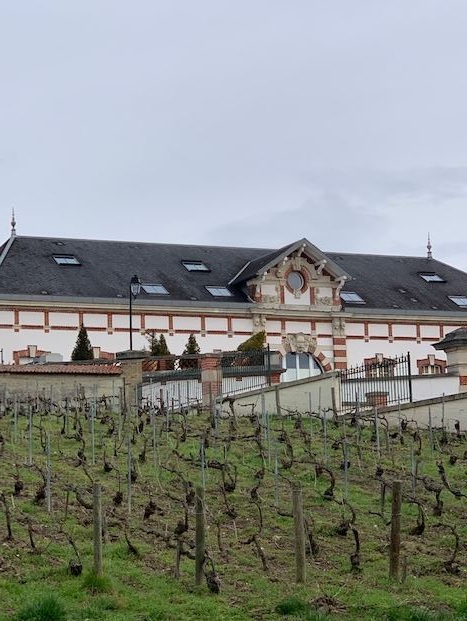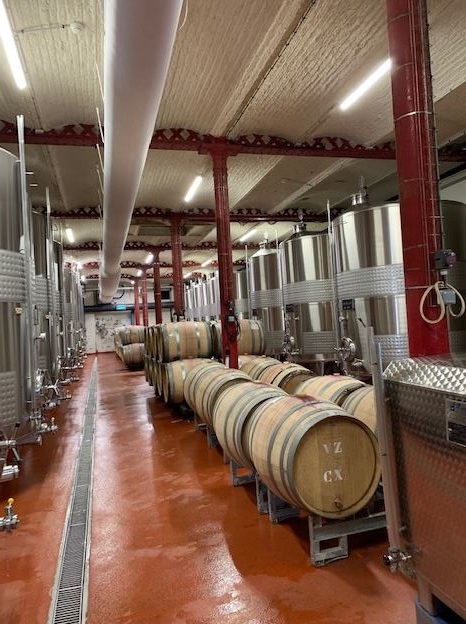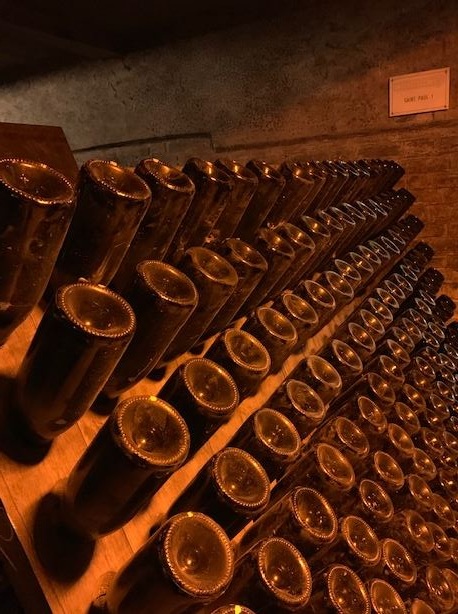Bollinger Vin Clair
Bollinger is a place that somehow seems both untouchably historic and welcoming. They are a global enterprise, but the team is tightly knit, the wines made with heart. Glamorous James Bond movie posters share wall space with family photos of visionary Lily Bollinger. Cooperage tools fill a workshop located steps from their grand courtyard. The Grande Marque, founded in 1829, clearly values luxury – when I asked for scratch paper to jot notes while on the cellar tour, my guide Karl presented me with a branded Moleskine notebook and beautifully packaged souvenir pen. They care about details at every level. Yet the house itself is set amongst its own vineyards in the unassuming village of Aÿ. Karl also serves on the tasting panel during the blending process, and his official position is Export Area Manager, but he delights in playing tour guide. There’s a dynamic feel to the place – it’s not hired part-timers reciting facts about production, it is people deeply connected to the whole operation, proudly taking you through the experience of making Champagne. It’s a lot to process as a first time visitor: for the Special Cuvée, 80,000 magnums are disgorged by hand! Wines are aged at least three but often five years (more than the appellation’s required fifteen months). One man, Florin, has been riddling bottles of the Grande Année release for the house for over 24 years, and is known to turn 50,000 per day.
Bollinger only seems expensive if you haven’t seen the care that goes in to making it.
In addition to the tour, I had the opportunity to try vin clair – the still wine that will become Champagne after the secondary fermentation in the bottle. It’s one thing to drink Champagne at the source, but to taste vin clair from the soon-to-be legendary 2018 vintage at Bollinger was enlightening. It was exciting, but perhaps more important to those of us clamoring to eventually drink the finished wines, provided insight into how the Champagne will develop.
The wines, while screaming with acid, were still surprisingly drinkable, and felt akin to young Burgundy. The vin clairs were separated by village and whether they were vinified in stainless steel or oak barrels (from their property in Bourgogne, Domaine Chanson). The fruit, mostly Grand Cru, was harvested between August 23 and September 12, 2018, and ranged from minerally Chardonnay from Avize, Chouilly, and Vertus, to electric Pinot Noir from Verzenay and of course their own backyard vineyards in Aÿ. The spectrum of samples showcased the terroir of individual sites in a way that is sometimes difficult to pinpoint, but stinging clear when trying them, unblended, side by side. With wines this good in their infancy, I can only imagine how lovely the finished Champagne will be.
I had to wait until I returned home to Hollywood to try Bollinger’s latest La Grande Année release, the much anticipated 2008. Powerful and textured, it mirrors Bollinger’s Pinot-driven house style but adds a layer of racy complexity thanks to the colder vintage. On the nose, white floral notes mingle with honeycomb, while pear fruit shines through the velvety palate. There’s a distinctive berry note, too, thanks to the 71% Pinot Noir, while 29% Chardonnay brings the perfect hint of chalk. Delicate bubbles provide finesse that balances the heady palate and vivid acid. This is all estate fruit, aged for nearly 10 years on the lees, the bottles are hand-riddled… wow. The quality is exceptional. Get ready to enjoy Bollinger Champagne, both this bottling and someday the 2018, for decades to come.
—Diana Turk







